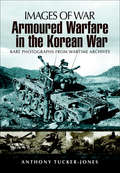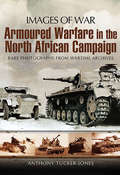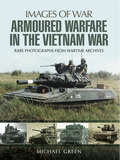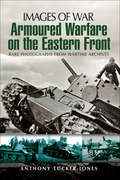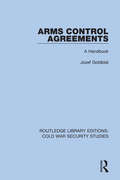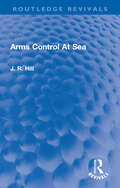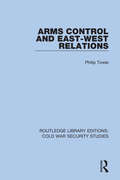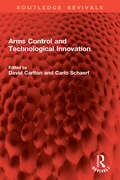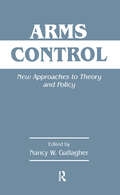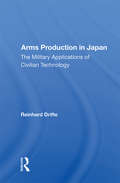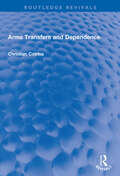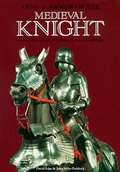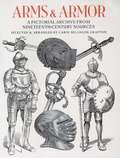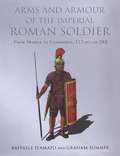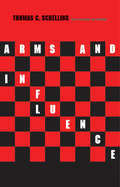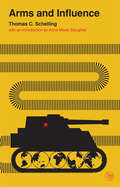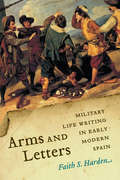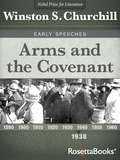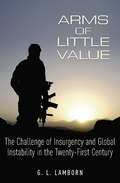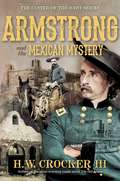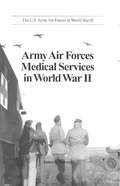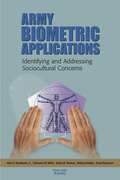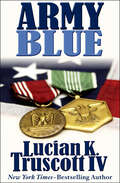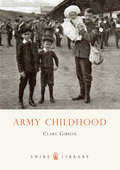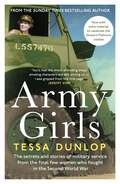- Table View
- List View
Armoured Warfare in the Korean War: Rare Photographs from Wartime Archives (Images of War)
by Anthony Tucker-JonesAfter the Second World War, military analysts thought that the only place significant armored forces were ever likely to confront each other again was in central Europe where the Nato alliance would fend off the Soviet Red Army. Then during the Korean War of 1950-53 both sides deployed large numbers of armored fighting vehicles, and this neglected aspect of the conflict is the subject of Anthony Tucker-Joness photographic history. Korea, with its rugged mountains, narrow passes, steep valleys and waterlogged fields was not ideal tank country so the armor mainly supported the infantry and rarely engaged in battles of maneuver. Yet the wide variety of armor supporting UN and North Korean forces played a vital if unorthodox role in the swiftly moving campaigns. For this fascinating book over 180 contemporary photographs have been selected to show Soviet-built T-34/85s and Su-76s, American M4 Shermans, M26 Pershings and M46 Pattons, and British Cromwells and Centurions in action in one of the defining conflicts of the Cold War.
Armoured Warfare in the North African Campaign: Rare Photographs from Wartime Archives (Images of War)
by Anthony Tucker-JonesThe North African campaign, the struggle of the Italians and Germans against the Allies in Egypt, Libya and Tunisia between 1940 and 1943, was a war of movement and maneuver, of dramatic changes of fortune, and it was a war in which mechanized forces—tanks in particular—excelled. Compared with the heavily populated landscapes of northwest Europe, the empty open spaces of North Africa appeared to be ideal operating terrain for tanks, yet the harsh desert conditions tested men and machinery to the limit, as Anthony Tucker-Jones demonstrates in this remarkable selection of wartime photographs.The use of armor during the entire course of the campaign is covered, from the initial Italian offensive, the arrival of Rommels Panzergruppe Afrika, the battles fought along the North African shore which culminated in El Alamein, then the Allied advance into Tunisia which led to the final defeat of the German and Italian armies.The images give a fascinating inside view of combat, but they also reveal the daily routines of tank warfare 65 years ago, and give a vivid impression of what it was like to fight in and live with the tanks of the day the German Mk IIIs and Mk IVs and the Tiger, the British Matildas and Valentines and the American Grants and Shermans that contributed so much to the Allied victory. Training, maintenance, transportation and supply are shown, as are the daily lives of the tank crews and extreme conditions in which they worked and fought.
Armoured Warfare in the Vietnam War: Rare Photographs From Wartime Archives (Images of War)
by Michael GreenThis pictorial history of the Indochina and Vietnam Wars captures the range of armored warfare used in the region through rare wartime photographs. The two conflicts that engulfed Indochina and Vietnam in the decades after World War II are generally thought of as infantry wars. But in fact, they both involved a significant amount of armored warfare. In this fully illustrated volume, military expert and Vietnam veteran Michael Green describes the many kinds of armored vehicles deployed and their contributions in combat. The ill-fated French Expeditionary Force of the Indochina War was largely equipped with World War II era American tanks—including M3 and M5 Stuart, M4 Sherman and M24 light tanks—as well as armored cars and half-tracks. Most of these eventually went to the Army of the Republic of Vietnam, but were outdated and ineffective due to lack of logistics and training. The US Army and Marine Corps build-up in the 1960s saw vast quantities of M48 Pattons, M113 APCs and many specialist variants and improvised armored vehicles arrive in the theatre. The Australians also brought their British Centurion tanks. But it was the Russians, Chinese and North Vietnamese who won the day and their T-38-85 tanks, ZSU anti-aircraft platforms.
Armoured Warfare on the Eastern Front: Rare Photographs from Wartime Archives (Images of War)
by Anthony Tucker-JonesA pictorial history and analysis of the tank warfare between Red Soviet and Nazi forces along the Eastern Front during World War II. On the Eastern Front during the Second World War, massive Soviet and German tank armies clashed in a series of battles that were unmatched in their scale and ferocity. Several of them have attained almost legendary status. But epic encounters such as these were only part of a broader story, as Anthony Tucker-Jones demonstrates in this selection of graphic photographs. While the images give a fascinating inside view of combat, they also reveal the daily routines of tank warfare 65 years ago. Training, maintenance, transportation, and supply are shown, as are the daily lives of the tank crews and the often appalling conditions in which they worked and fought. The photographs also record in vivid detail the destructive reality of armored warfare, from the initial triumphant advance of the German panzers deep into the Soviet Union to the massive Red Army counter-offensives which drove the German armies back to Berlin.Praise for Armoured Warfare on the Eastern Front&“Each chapter includes a useful introduction and the pictures each come with an accurate and informative caption, describing the item in the picture and placing it in context, comparing it to its opponents at the time or looking at production numbers. This is a high quality piece of work, and a useful photographic guide to the armoured vehicles of the Eastern Front.&” —History of War
Arms Control Agreements: A Handbook (Routledge Library Editions: Cold War Security Studies #5)
by Jozef GoldblatThis book, first published in 1982, provides a well-informed historical overview, insightful analysis and searching critique of arms control agreements and negotiations from the Hague Declaration of 1899 to the SALT Treaties and Conventions of the 1970s and 1980s. Arms control agreements of international importance and historical merit are assessed, for the extent to which each affected the arms race or reduced the likelihood of war.
Arms Control At Sea (Routledge Revivals)
by J Richard HillOriginally published in 1989, this book reviews the history of maritime control measures from before the First World War and provides a critical examination of both the objectives of maritime power and the concepts of disarmament, peace zones, parity, verifiability and peaceful co-existence. It argues that the objectives or maritime power are not necessarily incompatible with international security and that strategic deterrence can contribute to improved security. Limitation measures, it is argued, can in some cases be double-edged, endangering other security fields and having a destabilizing effect. The book stresses the need for non-absolute solutions in order to achieve a reasonable level of security and makes proposals for both structural and confidence-building measures along those lines
Arms Control and East-West Relations (Routledge Library Editions: Cold War Security Studies #4)
by Philip TowleThis book, first published in 1983, examines the role that arms control has to play, alongside defence and deterrence, in stabilising East-West relations and reducing tensions during the Cold War. Arms control agreements were designed in the attempt to achieve parity between the nuclear forces of the superpowers, without making war more likely. A danger of confrontation between the USSR and the USA came from their involvement in Third World conflicts, and this arena is also discussed. The diplomatic approaches of the Soviet Union, the Third World and the West, and their aims in arms control, are also analysed.
Arms Control and Technological Innovation (Routledge Revivals)
by David Carlton Carlo SchaerfFirst published in 1977, Arms Control and Technological Innovation is primarily concerned with three subjects: the causes of the arms race; the consequences of the arms race to the world; and the control of the arms race. Written by experts in the field, it brings themes like new technologies and new weapon systems; new tactics to replace tactical nuclear weapons in Europe; the Anglo-American nuclear relationship; strategic arms limitation and military strategic concepts; and a new approach to strategic arms limitation and reduction.The book argues that the principal problem of the arms race, according to several lectures, is that weapons and delivery-systems technology have developed so much as to threaten the survival of civilization itself. The pace of technological change is proceeding more rapidly than ever before and there is serious doubt whether political institutions are adapting to this change in time to avoid devastating consequences to the world. This book is a must read for scholars and researchers of military and strategic studies, international relations, international politics and geopolitics.
Arms Control: New Approaches to Theory and Policy
by Nancy W. GallagherContents: Bridging the Gaps on Arms Control Nancy W. Gallagher. Arms Control in the Information Age Emily O. Goldman. A New Role for Transparency Ann M. Florini. Beyond Deterrence, Defence, and Arms Control Gloria Duffy. Nuclear Arms Control through Multilateral Negotiations Rebecca Johnson. The Impact of Govermental Context on Negotiation and Implementation: Constraints and Opportunities for Change Amy Sands. The Politics of Verification: Why How Much?' is Not Enough Nancy W. Gallagher.
Arms Production In Japan: The Military Applications Of Civilian Technology
by Reinhard DrifteAlthough Japan's arms industry is still relatively small, significant political, economic, and technological developments indicate its growing importance and pave the way for Japan's increasing involvement in arms production. In this comprehensive study, Dr. Drifte examines both the domestic and international environments that are encouraging Japan
Arms Transfers and Dependence (Routledge Revivals)
by Christian CatrinaFirst published in 1988, Arms Transfers and Dependence was written to provide a view of arms transfers in the context of the global distribution of power. The book analyses different types of dependence and is focused on comparing the enhancement of military capabilities as a result of arms transfers with the dependence that may be caused by those transfers. In doing so, it provides an overview of how particular structures of imports and exports of arms lead to dependence.
Arms and Armor of the Medieval Knight
by John Miles David EdgeTraces changes in armor and weaponry as the knight's rol in warfare and peacetime society changes from the Middle Ages through the 15th century. Book includes detailed descriptions and pictures of armor and weaponry worn during this long time span. The author explains how armor and weapons are influenced and changed.
Arms and Armor: A Pictorial Archive from Nineteenth-Century Sources (Dover Pictorial Archive)
by Carol Belanger GraftonOver thousands of years, man has developed an enormous variety of offensive and defensive weapons for use in battle as well as a vast array of armor and other protective devices. Now artists and illustrators can draw on this extensive archive for superb copyright-free illustrations of vintage arms, armor, and other battlefield paraphernalia. Choose from a rich trove of over 750 illustrations compiled from rare nineteenth-century sources. Included are detailed, high-quality depictions — arranged chronologically and, to some extent, geographically — of suits of armor, chain mail, swords, halberds, spears, pikes, lances, crossbows, axes, daggers, helmets, shields, knives, small arms, and a host of other implements, along with scenes of battle, siege, jousts, soldiers, horses, and more. Especially suitable for projects requiring a medieval or old-fashioned flavor, these illustrations reproduce extremely well. They will fill a myriad of needs for battle-related graphic art.
Arms and Armour of the Imperial Roman Soldier: From Marius to Commodus, 112 BC–AD 192
by Raffaele D'Amato Graham SumnerA survey of the various forms of armour worn by the Roman soldier from 112 BC to 192 AD, featuring a wealth of illustrations and plates. From the Latin warriors on the Palatine Hill in the age of Romulus, to the last defenders of Constantinople in 1453 AD, the weaponry of the Roman Army was constantly evolving. Through glory and defeat, the Roman warrior adapted to the changing face of warfare. Due to the immense size of the Roman Empire, which reached from the British Isles to the Arabian Gulf, the equipment of the Roman soldier varied greatly from region to region. Through the use of materials such as leather, linen and felt, the army was able to adjust its equipment to these varied climates. Arms and Armour of the Imperial Roman Soldier sheds new light on the many different types of armour used by the Roman soldier, and combines written and artistic sources with the analysis of old and new archaeological finds. With a huge wealth of plates and illustrations, which include ancient paintings, mosaics, sculptures and coin depictions, this book gives the reader an unparalleled visual record of this fascinating period of military history. This book, the first of three volumes, examines the period from Marius to Commodus. Volume II will cover the period from Commodus to Justinian, and Volume III will look at the period from Romulus to Marius. &“An impressive achievement, a testament to an enormous scholarly effort—and it is a significant contribution to the understanding of the Roman army.&” —Bryn Mawr Classical Review &“Without doubt, this is the definitive study of clothing, armour and weaponry worn by Roman soldiers during the golden age of their conquests...D&’Amato has brought together a remarkable collection of archaeological photographs gathered over decades to illustrate every aspect of this military evolution . . . A treasure trove of facts and illustrations that is essential reading for any Roman military enthusiast.&” —Tim Newark, Military Illustrated Magazine
Arms and Influence
by Prof. Thomas C. SchellingThe author concentrates in this book n the way in which military capabilities real or imagined are used, skillfully of clumsily, as bargaining power. He sees the steps taken by the U. S. during the Berlin and Cuban crises as not merely preparations for engagement, but as signals to and enemy, with reports from the adversary's own military intelligence as our most important diplomatic communications.
Arms and Influence (Veritas Paperbacks)
by Thomas C. Schelling&“This is a brilliant and hardheaded book. It will frighten those who prefer not to dwell on the unthinkable and infuriate those who have taken refuge in stereotypes and moral attitudinizing.&”—Gordon A. Craig, New York Times Book Review Originally published more than fifty years ago, this landmark book explores the ways in which military capabilities—real or imagined—are used, skillfully or clumsily, as bargaining power. Anne-Marie Slaughter&’s new introduction to the work shows how Schelling&’s framework—conceived of in a time of superpowers and mutually assured destruction—still applies to our multipolar world, where wars are fought as much online as on the ground.
Arms and Letters: Military Life Writing in Early Modern Spain (Toronto Iberic)
by Faith S. HardenArms and Letters analyses the unprecedented number of autobiographical accounts written by Spanish soldiers during the sixteenth and seventeenth centuries. These first-person retrospective works recount a range of experiences throughout the sprawling domain of the Hispanic monarchy. Reading a selection of autobiographies in contemporary historical context – including the coalescing of the first modern armies, which were partially populated by forced recruits and the urban poor – Faith S. Harden explains how soldiers adapted the concept of honour and contributed to the burgeoning autobiographical form. Harden argues that Spanish military life writing took two broad forms: the first as a petition, wherein the soldier’s service was presented as a debt of honour, and second, as a series of misadventures, staging honour as a spectacle that captivated an audience. Honour was inevitably gendered and performative, and as such, it functioned as one of the overarching metrics of value that early modern men and women applied to themselves and others. In charting how non-elite subjects rendered their lives legitimate through autobiography, Arms and Letters contributes both to a critical genealogy of honour and to the history of life writing.
Arms and the Covenant (Winston S. Churchill Early Speeches)
by Winston S. ChurchillThis inspiring collection of campaign speeches from the British prime minister bring his oratory brilliance and powers of persuasion to life. Legendary politician and military strategist Sir Winston Churchill was a master not only of the battlefield, but of the page and the podium. Over the course of forty books and countless speeches, broadcasts, news items and more, he addressed a country at war and at peace, thrilling with victory but uneasy with its shifting role on the global stage. In 1953, he was awarded the Nobel Prize for Literature for &“his mastery of historical and biographical description as well as for brilliant oratory in defending exalted human values.&” During his lifetime, he enthralled readers and brought crowds roaring to their feet; in the years since his death, his masterful writing has inspired generations of eager history buffs. Well before Britain entered World War II, Winston Churchill warned his government about the growing Nazi threat, even as many European leaders were still urging caution and diplomacy. In this collection of forty-one speeches from 1928 to 1938, the great politician&’s prescience and political skill—vital to Britain&’s role as the first country to stand against Hitler—are clearly on display. This collection, which includes the famous &“Disarmament Fable&” speech, presents a fascinating look at Churchill&’s campaign to mobilize Britian against the rising Nazi threat, and showcases his versatility and genius as one of the best orators of the twentieth century.
Arms of Little Value: The Challenge of Insurgency and Global Instability in the Twenty-First Century
by G. L. LambornIn a dangerous era, a former soldier and CIA officer proposes smarter ways to keep the US safe from the effects of insurgencies around the world. What we&’ve been seeing in Tunisia, Egypt, Libya, Bahrain, Yemen, and elsewhere in recent years is merely the beginning. We are entering an extremely dangerous period in our history. The author, with over a quarter century of intelligence experience, has been a student, an observer—and sometimes a participant—in various insurgencies since his &“initiation&” in Vietnam in 1969. This book offers an understanding of the true nature of insurgency and a glimpse at the reasons why we have not always dealt with it effectively. Drawing from his service in various Third World nations, as well as several successor republics of the former Soviet Union, G.L. Lamborn provides a crucial understanding of what ignites and sustains these movements—and what can prevent them from spreading and spiraling out of control. &“Through case studies and analysis, Lamborn, a former Army and Central Intelligence Agency officer, seeks to explicate the importance of political action to insurgencies and explain how military power is successful only to the extent it delegitimizes an insurgency . . . If readers accept the premise of honest, critical evaluation of military power&’s limits, there is much to be gained from Arms of Little Value.&” —Military Review
Armstrong and the Mexican Mystery (Custer of the West Series #3)
by H. W. Crocker IIIMore fantastical than Harry Turtledove, funnier than Eric Flint, and with definite shades of The Wild, Wild West, the celebrated Custer of the West series—praised by Winston Groom (Forrest Gump), Stephen Coonts (The Flight of the Intruder), and Rob Long (Cheers)—comes to its shocking—and hilarious—climax as George Armstrong Custer, surprise survivor of the Battle of the Little Bighorn, unearths the lost civilization of Atlantis and battles the evil Atlanteans for the fate of the world.NEVER FEAR—ARMSTRONG IS HERE! A mysterious gunman meets Marshal Armstrong in San Francisco with tales of lost gold, unrequited revenge, and an unsolved mystery in Mexico&’s Chihuahuan Desert, inspiring Marshal Armstrong, Ambrose Bierce, and the rest of Armstrong&’s loose band of soldiers of fortune to plunge into an adventure of fierce gunfights, criminal conspiracies, an innovative submarine, and an underground, secret superpower—the remnants of Atlantis—that aims to subvert Western civilization! Can the malevolent, scheming Atlanteans be stopped? That&’s the mission for George Armstrong Custer, traveling incognito as Marshal Armstrong Armstrong, knight-errant. Full of suspense, non-stop action, chivalric romance, and effervescent humor, this is a great place to enter the Custer of the West series! Praise for W.H. Crocker III, and the Custer of the West series: &“The world has a new hero—actually an old hero reimagined—George Armstrong Custer, in this delightfully funny alternative history that&’s better, or at least happier, than the real thing.&” —WINSTON GROOM, best-selling author of Forrest Gump and El Paso &“Droll satire, this is the West as it might have been if the Sioux hadn&’t saved us.&”—STEPHEN COONTS, best-selling author of Flight of the Intruder and The Russia Account &“If Custer died for our sins, Armstrong resurrects him for our delight. Not just the funniest book ever written about an Indian massacre, but laugh out loud funny, period. The best historical comic adventure since George MacDonald Fraser&’s Flashman.&”—PHILLIP JENNINGS, author of Nam-A-Rama and Goodbye Mexico &“A delightful romp that shifts seamlessly between thrilling Western and outlandish farce.&”—GRAYSON QUAY, Modern Age &“The best new novel I&’ve read in years. As rugged as Zane Grey, as funny as P. G. Wodehouse, as smart as Evelyn Waugh, and as sharp as Ambrose Bierce. You don&’t want to miss it.&”—MICHAEL WARREN DAVIS, author of The Reactionary Mind &“Crocker has created a hilarious hero for the ages. Armstrong rides through the Old West setting right the wrongs, and setting wrong the rights, in a very funny cascade of satire, history, and even patriotism.&”—ROB LONG, Emmy- and Golden Globes-nominated screenwriter and co-executive producer of Cheers
Army Air Forces Medical Services In World War II (The U.S. Army Air Forces in World War II #7)
by James S. NaneyThis history summarizes the Army Air Forces (AAF) medical achievements that led to the creation of the Air Force Medical Service in July 1949. When the United States entered World War II, our nation's small aviation force belonged to the U.S. Army and relied on the Army medical system for support. The rapid expansion of the AAF and the medical challenges of improved aircraft performance soon placed great strain on the ground-oriented Army medical system. By the end of the war, the AAF had successfully acquired its own medical system oriented to the special needs of air warfare. This accomplishment reflected the determined leadership of AAF medical leaders and the dedication of thousands of medical practitioners who volunteered for aviation medical responsibilities that were often undefined or unfamiliar to them. In the face of new challenges, many American medics responded with hard work and intelligence that contributed greatly to Allied air superiority.
Army Biometric Applications: Identifying and Addressing Sociocultural Concerns
by Katharine Watkins Webb David Rubenson Elaine M. Newton John D. Woodward Melissa A. BradleyEvery human possesses more than one virtually infallible form of identification. Known as biometrics, examples include fingerprints, iris and retinal scans, hand geometry, and other measures of physical characteristics and personal traits. Advances in computers and related technologies have made this a highly automated process through which recognition occurs almost instantaneously. With concern about its information assurance systems and physical access control increasing, the Army has undertaken an assessment of how it can use biometrics to improve security, efficiency, and convenience. This report examines the sociocultural concerns that arise among soldiers, civilian employees, and the general public when the military mandates widespread use of biometrics. The authors see no significant legal obstacles to Army use of biometrics but recommend that the Army go beyond the provisions of the Privacy Act of 1974 to allay concerns related to this emerging technology. This report should be of interest to those responsible for access control as well as anyone concerned about privacy and technology issues.
Army Blue
by Lucian K. Truscott IVFrom the bestselling author of Dress Gray. &“Part-war story, part-family saga . . . zeroes in on the men of the Blue family, three generations of soldiers&” (The Washington Post). In the eagerly anticipated follow-up to his first novel, Dress Gray, Truscott turns his attention to the Vietnam War and delivers a suspenseful, sprawling court-martial drama set in Saigon in 1969. At twenty-three, platoon leader Lt. Matthew Nelson Blue is the youngest member of an army family; his father is a colonel and his grandfather a profane, cantankerous retired general. Shortly after one of his men is killed by friendly fire while on routine patrol, Blue is arrested and charged with desertion in the face of the enemy. Arriving in Vietnam, his father and grandfather end their long estrangement and join forces to clear the young soldier&’s name. Truscott&’s plot offers less than initially meets the eye; the nature of the conspiracy and cover-up that nearly destroy Blue is fairly easy to predict, as is the disillusionment about Vietnam that eventually befalls his seniors. The author&’s intimate portrayal of the texture of army life gives his narrative a more deeply felt sense of anger and regret than others in its genre, and makes its final revelations more powerful than they might otherwise have been.
Army Childhood
by Clare GibsonAn army childhood is a peripatetic childhood. Taking the Napoleonic Wars as its starting point, Army Childhood sheds light on such crucial aspects of the army-child experience as the places that the children of British Army soldiers have called home, and on how they have been transported, housed, cared for, educated and entertained after the army assumed responsibility for their welfare. This informative and evocatively illustrated book will appeal to those interested in British military history's social side, and to those seeking to understand what life was like for an erstwhile army-child ancestor. It is also essential reading for those who were once themselves 'barrack rats', 'pads' brats', or 'army brats', in whom it is guaranteed to arouse nostalgic memories.
Army Girls: The secrets and stories of military service from the final few women who fought in World War II
by Tessa DunlopArmy Girls is the intimate story of the final few women who served in World War II and are still alive to tell their tale. They were female soldiers in a war Britain wanted to fight without conscripting women. It was a vain hope, by December 1941 for the first time in British history women were called up and a generation of girls came of age in khaki, serving king and country. Barbara trained to drive army-style in giant trucks and Grace swapped her servant's pinafore for battledress and a steel hat, Martha turned down officer status for action on a gun-site and Olivia won the Croix de Guerre in France.Commemorating the 80th anniversary of conscription for women, Army Girls captures remarkable stories from the last surviving veterans who served in Britain's female army and brings to life a pivotal moment in British history. Precious memories and letters are entwined in a rich narrative that travels back in time and sheds new light on being young, female and at war.Uniquely this moving Second World War memoir is embedded in the present day. Written in the midst of a global pandemic, the parallels and paradoxes between two very different national crises are explored in a book that honours the women who fought on in extreme youth and now once more in great old age.
